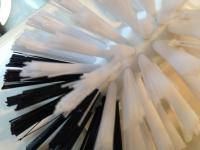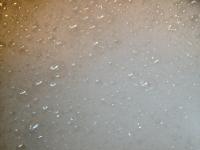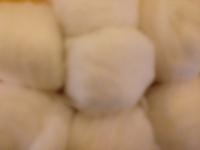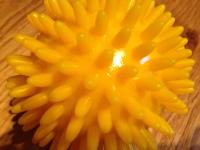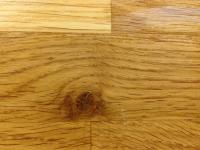Chamber Concerto - Ligeti Composing with Contemporary Music (Teachers) >
Composing musical textures inspired Chamber Concerto by Gyorgy Ligeti
Programme Note
Composed in 1969/70, Chamber Concerto by György Ligeti is in four movements:
I. Corrente
II. Calmo, sostenuto
III. Movimento precise e meccanico
IV. Presto
Unlike most concertos for one solo instrument, Ligeti treats all the instrumentalists in the ensemble as soloists. He was also fascinated by texture as a structural device and used it as the building blocks for much of his music. He created textures in many different ways including: superimposing several instruments each playing a pitch repeated at a certain periodic rate and layering two or more different melodic lines to form one distinct layer where the melodic lines move around a narrow pitch band and have similar shapes and dynamics.
 Graphic score inspired by Ligeti's Chamber Concerto by Music Maze participant.
Graphic score inspired by Ligeti's Chamber Concerto by Music Maze participant.
Introduction
In this resource the children will create musical textures in two different ways:
- Layering individual short melodic fragments using the same restricted pitch range from D to A, and refining them inspired by physical textures.
- Layering different repeating patterns of notes and silences which move at different speeds.
Learning Objectives
- To understand what a musical texture is
- To be able to create a musical texture
- To understand how musical textures can be organised to create large scale structures/pieces of music
- To better understand and support listening to Ligeti’s Chamber Concerto.
Resources Needed
- Textural materials: soap bubbles, brushes, spikey ball, carpet, bubble wrap, a crystal, lentils.
- Other: five dice, A3 paper
Please read the Music Maze Guidance and listen to the Chamber Concerto before starting.
Activity One: What is a Texture?
Follow me warm-up
Stand in a big circle with the children and ask them to follow and make all the sounds and movements that you do. E.g. tapping knees, clicking fingers, trilling voices, stamping feet etc. Make sure the children follow you exactly and make sure the sounds and movements contrast well from each other.
Discussion
Ask the children what the ingredients/elements of music are. Children will usually name rhythm, melody, dynamics etc. but often forget texture. Ask them what texture in music might be. Think back to the Follow Me game and the textures created there – tapping knees, clicking fingers, trilling voices, stamping feet.
With the whole group create some more simple textures which do not have melodies or clear rhythms. For example, ask them to play in their own time, groups of fast repeated notes or quiet short glissandos.
Ask them where else the word texture is used then take a look at the different materials you have gathered lentils, cotton wool, bubbles, brush, hessian, crystal. Collect words that describe the textures of the different materials. Notice with the children that each of the materials is made up from smaller identical components.

Activity Two: From Melody to Texture
Ask the children to individually compose a short seven-note melody that they can remember and play. They can only use notes between the pitches D to A inclusive but can repeat notes and have silence/rests within them.
Ask them to practice playing their melodies in lots of different ways and speeds.
Listen back to some of the solo melodies.
Listen to the BCMG musicians playing their melodies in turn.
Now create a texture by asking everyone to play repeated iterations of their melody. Listen to the effect. What does it sound like to the children? Confusing, chaos, busy?
Refine the texture by:
- Asking the children to wait x number of seconds between each iteration of their melody and start at different times. How does it sound now?
- Asking different combinations of instruments to play their melodies at the same time maybe also incorporating the above idea.
Activity Three: Melody Textures
Look back at the texture words and choose five of them. Using the seven-note melodies create together five textures using different combinations of instruments and ways of playing that describe the five textural words. It will be easier later on if each texture has different instruments i.e. no one is in more than one texture. (NB In the recorded examples the same group of instruments can be heard for each texture). With the group decide on a visual image for each texture. E.g.
Bubbling
Brushing
Cotton Wool
Spiky
Wooden
Activity Four: Rhythmic Planes Texture
Another way Ligeti composes textures is through creating rhythmic planes which move at different speeds – often described as a musical machine with different parts of the machine working at different speeds. In the Chamber Concerto the different parts of the machine are musically represented by different groupings of instruments. Divide your group into (1) guitars/harps/perc, (2) brass, (3) woodwind, (4) strings. There could be more or less groups and different groupings depending on the size and make up of your group.
To create their rhythmic planes, ask each group to first roll the dice to determine their number of pulsed repeated notes and then again to decide on how many silent beats there will be. E.g. first roll five, second roll three… x x x x x _ _ _ x x x x x _ _ _ etc.
Ask the children to clap the pattern first and then play on one note of their choosing. They will need a conductor to keep everyone in time. It is very important that they become confident in playing together. Ask the groups to practice playing their pattern at different speeds, different dynamics and different articulations (maybe inspired by the textures), always repeating over and over the pattern. (You can add more numbers to make it more complicated).
Now create a layered texture by cue-ing the different groups to start and stop. They can perform their pattern at the speed, dynamic and articulation of their choosing. The challenge here is for the groups not to be influenced by each other but to stick to their rhythmic plane. Create a quick graphic image to represent this texture.

Activity Five: Making a Score and Realising the Music
The group will now have five melody textures and the rhythmic planes texture. Each texture also has a graphic image. As individuals or pairs, ask the children to plan/create a score for a large scale piece using the musical textures created using the graphic images. Using a large sheet of paper such as A3 would help here. The children can create sequences of textures or layer them. (NB they can layer melody textures but not the rhythmic planes texture). The children also need to think about:
- How they are going to move from one texture to another?
- How they are going to create a satisfying over all structure?
- How they will start and finish the piece?
Try out some of the scores and discuss how successful they are. You could also create one large score on a roll of wallpaper.
It is unlikely that you will be able to realise all of the scores as a group. However if you make recordings of the different textures the young people could all realise their music/scores using software like Garage Band or Audacity.
Listen to these versions of Chamber Concerto created by children at Music Maze:
 Graphic scores by Music Maze participants
Graphic scores by Music Maze participants


BESbswyBESbswyBESbswyBESbswyBESbswyBESbswyBESbswyBESbswyBESbswyBESbswyBESbswyBESbswyBESbswyBESbswyBESbswyBESbswyBESbswyBESbswyBESbswyBESbswyBESbswy

